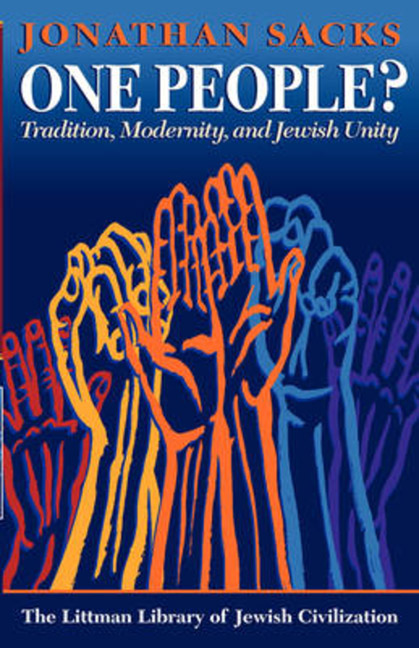Book contents
- Frontmatter
- Dedication
- Preface
- Contents
- Note on Transliteration and Place Names
- Abbreviations
- 1 The Crisis of Contemporary Jewish Thought
- 2 The Birth of the Adjectival Jew
- 3 Orthodoxy, History, and Culture
- 4 Orthodoxy and Jewish Peoplehood
- 5 Tradition and Diversity
- 6 Inclusivism
- 7 A Collision of Consciousness
- 8 Schism?
- 9 The Future of a People
- Bibliography
- Index
7 - A Collision of Consciousness
- Frontmatter
- Dedication
- Preface
- Contents
- Note on Transliteration and Place Names
- Abbreviations
- 1 The Crisis of Contemporary Jewish Thought
- 2 The Birth of the Adjectival Jew
- 3 Orthodoxy, History, and Culture
- 4 Orthodoxy and Jewish Peoplehood
- 5 Tradition and Diversity
- 6 Inclusivism
- 7 A Collision of Consciousness
- 8 Schism?
- 9 The Future of a People
- Bibliography
- Index
Summary
THE previous chapter described the halakhic strategy for preserving Jewish unity in the face of division over fundamentals and termed it inclusivist. But it raises a number of questions. Why can there be no halakhic strategy along the lines favoured by those outside Orthodoxy, namely pluralism? If Judaism recognizes pluralism along a number of axes, why not halakhic pluralism? And ifit should emerge that inclusivism is the only available strategy, is it indeed a formula for Jewish unity? Does it not fail by its own unacceptability to those outside of Orthodoxy? To answer these questions, we must first be clear what the terms mean.
John Hick, discussing the relationships between one faith and another, defines three possibilities: exclusivism, inclusivism, and pluralism. Exclusivism is the view that ‘one particular mode of religious thought and experience (namely one's own) is alone valid, all others being false’. Inclusivism is the view that ‘one's own tradition alone has the whole truth but that this truth is nevertheless partially reflected in other traditions’. Pluralism is the view that ‘the great world faiths embody different perceptions and conceptions of, and correspondingly different responses to, the Real or the Ultimate'.
Let me put the distinction more precisely as it concerns Judaism. Inclusivists and exclusivists share the view that there is only one authoritative set of religious truths and imperatives. They hold, in other words, the classic rabbinic position that every Jew is bound by the principles of faith and the rules of halakhah. These are the boundaries of Judaism. But they move on from this starting-point in opposite directions. An exclusivist takes rejection of these norms at its face value. Karaites who rejected rabbinic law, conversos who out of fear embraced Christianity or Islam, and liberal or secular Jews who broke with halakhah had placed themselves outside the community of faith. They were heretics. They had no share in the world to come. The good deeds and Jewish rituals they performed were not mitzvot. They or their children, at least in some respects, had forfeited their status as Jews.
Inclusivists do not take rejection at its face value. As the term implies, they seek to include within the faith those who apparently stand outside. Thus Maimonides saw conversos and the children of Karaites as Jews still within the ambit of salvation.
- Type
- Chapter
- Information
- One People?Tradition, Modernity, and Jewish Unity, pp. 141 - 168Publisher: Liverpool University PressPrint publication year: 1993

